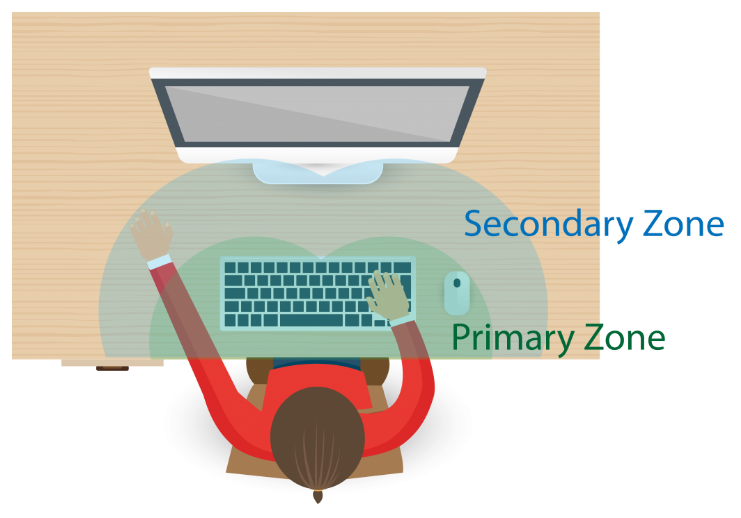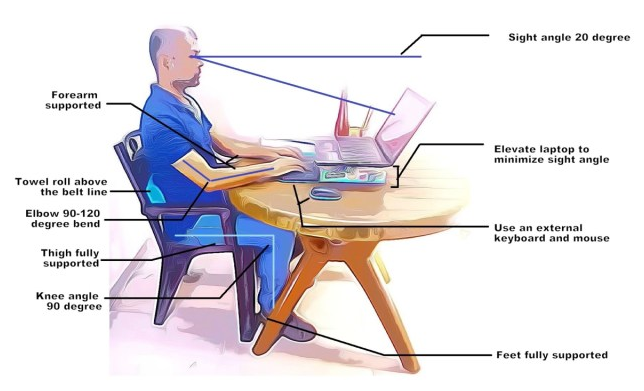Working from Home the Husky Way

A large number of people don’t have the same equipment at home that they would have in their work office. Until recently this was not concern until the largest working-from-home endeavor in history.
Millions of people across the globe are already staying away from their workplaces as mandated by their employers due to coronavirus, many working remotely for the first time. So grab your laptop and get to work right?
Not so fast. Unless you regularly work from home, chances are you aren’t prepared.
Sure, you can do everything from your laptop while sitting on the dining room chair at your kitchen table. But you can’t do it without putting yourself at risk.
One of the easiest and most important things you can do is to take your keyboard and mouse home from the office with you. Hunched forward with shrugged shoulders, a bent neck, and angled wrists – hardly anyone can use a laptop without a severely restricted posture. It might even be how you are sitting right now.
Working for a day or two and you’ll probably be fine. An external keyboard and mouse allows you to sit upright with the shoulders squared, in turn helping you keep a neutral spine.
Ideas to Improve Your Posture
Position the keyboard and mouse such that it is in the primary work zone – the area you can access comfortably without bending or reaching.
Having the ability to raise your laptop, either with a stand or even just on top of some books can make a significant impact on your posture and comfort.
This accomplishes two ergonomic goals; your eyes will no longer be too close to the screen and your neck won’t have to be bent in an awkward position
Position the top of your monitor just below eye level at about one arm’s length away.
The goal is to have the proper working height for your upper limbs and support for a neutral spine. Like most people, you probably don’t have a height-adjustable desk at home – and that’s okay. But if you can adjust your chair to bring your elbow height in line with the work surface, you’re golden, at least in that regard.



Photo courtesy of Physilife, Subhanjan Das, Associate Professor, Garden City University, Bengaluru, Karnataka, India.
Now, you need to ensure your feet are still comfortably flat on the floor. In case they aren’t, find something to put under them – a small stool, a laptop bag, etc. – to keep them supported.
If your chair is the wrong size, and you have to work while hunching, shrugging, or slouching, take frequent breaks to get up and stretch. Alternating work areas provides some relief, too.
For a chair without lumbar support, or even if it’s just too large, use a portable back support, a pillow, or a rolled up towel to take the load off and keep your spine more neutral.

Photo courtesy of Physilife, Subhanjan Das, Associate Professor, Garden City University, Bengaluru, Karnataka, India.
For further information, contact Thomas Varghese, UConn Health Ergonomist, at tvarghese@uchc.edu.